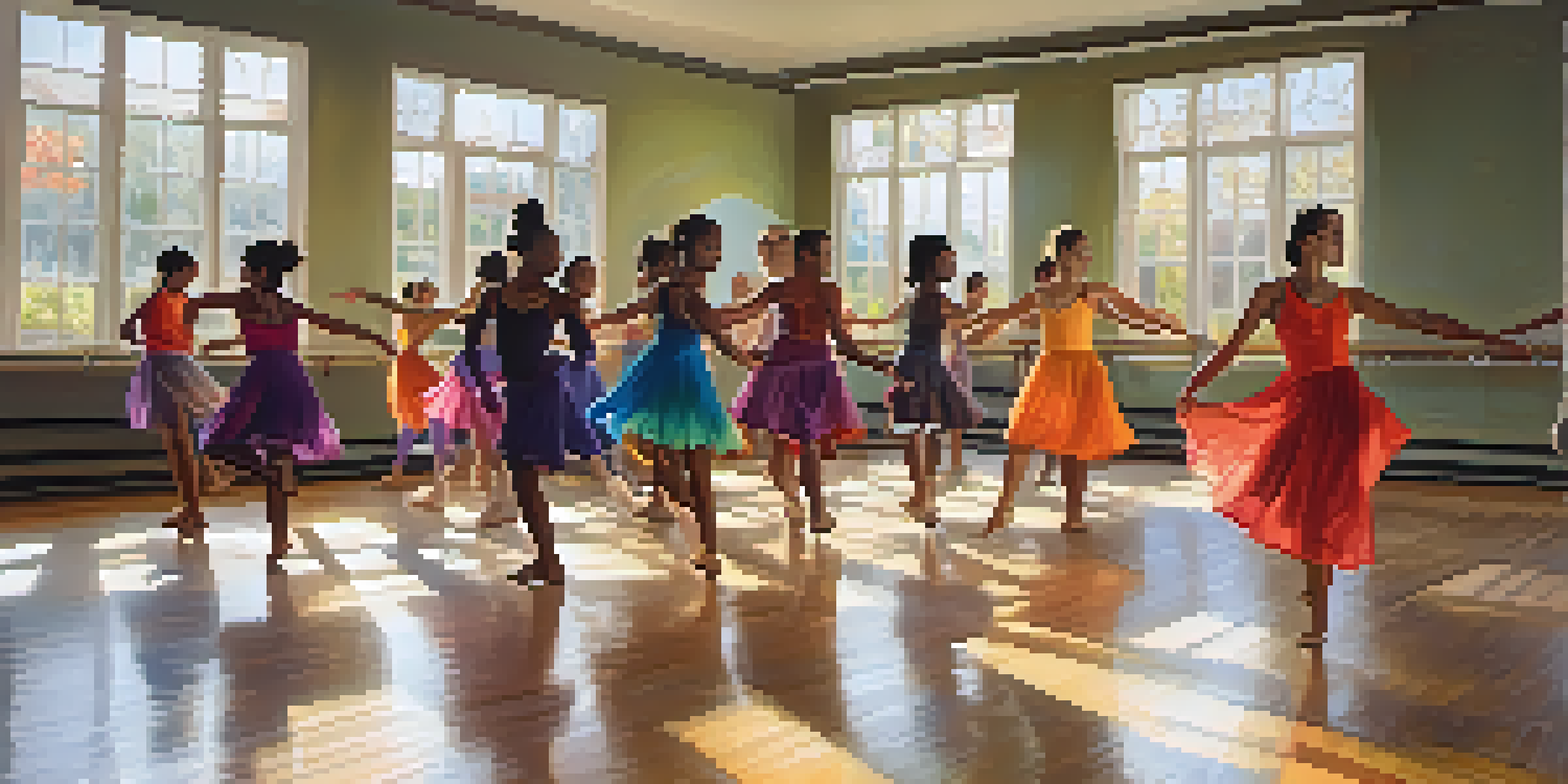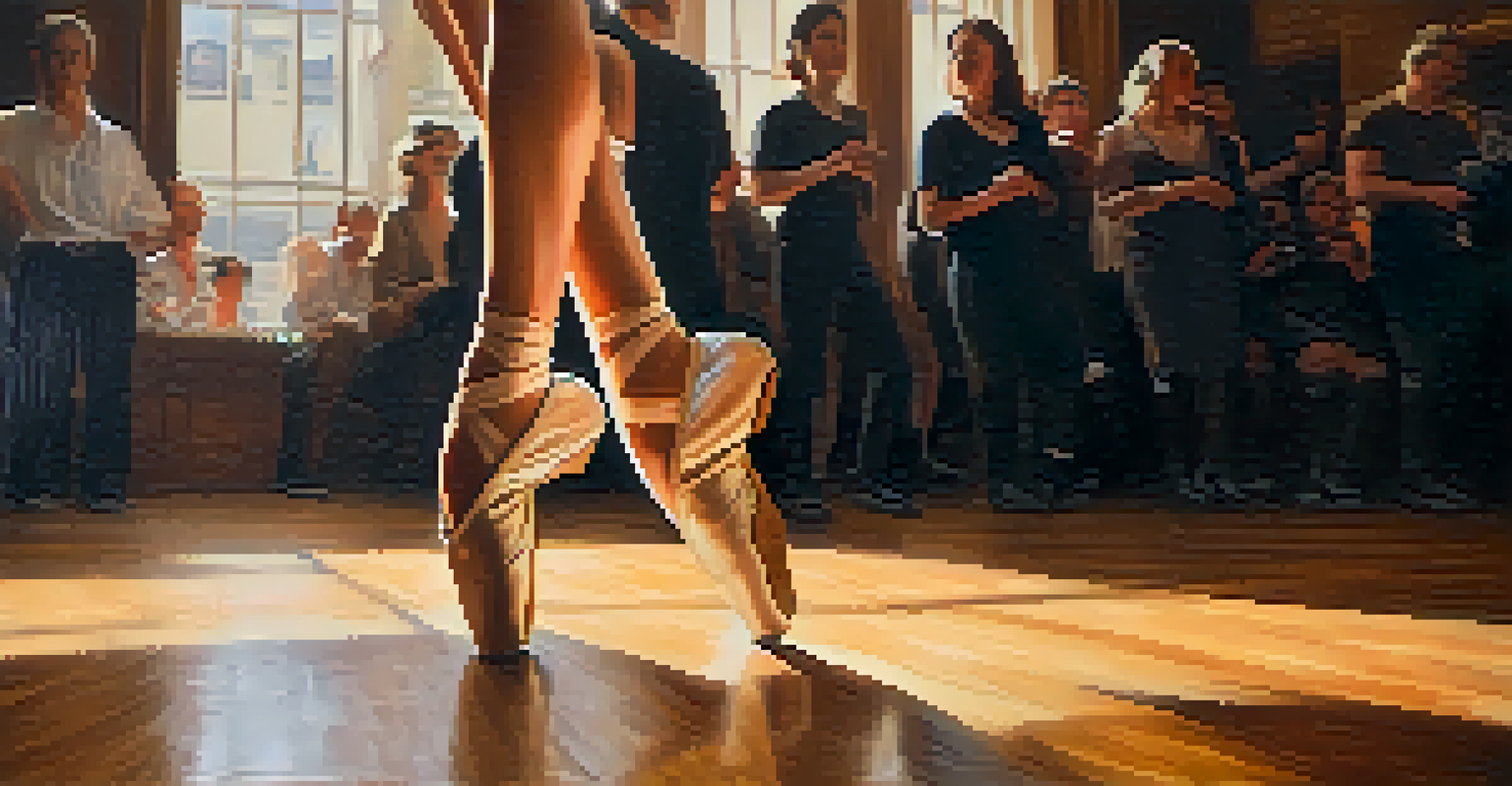Exploring the Connection Between Dance and Neurotransmitters

The Science of Dance and Neurotransmitters Explained
Dance is not just a form of artistic expression; it's also a fascinating intersection of movement and science. At the core of this connection are neurotransmitters, the chemical messengers that facilitate communication within our brain. These tiny molecules play significant roles in regulating mood, motivation, and even our sense of pleasure, making them crucial to our overall well-being.
Dance is the hidden language of the soul.
When you dance, your body engages in physical activity that stimulates the release of various neurotransmitters. For instance, dopamine, often referred to as the 'feel-good' neurotransmitter, is released during enjoyable activities. This release can elevate your mood and create a sense of euphoria, turning a simple dance session into a joyful experience.
Moreover, serotonin and endorphins, which are also released during dancing, contribute to feelings of happiness and relaxation. Understanding this intricate relationship helps us appreciate how dance can be a therapeutic outlet, providing not only physical benefits but also mental and emotional support.
How Dancing Boosts Dopamine Levels
Dopamine is a key player in the brain's reward system, and dancing is an excellent way to boost its levels. When you engage in dance, especially in a social setting, your brain starts to associate the enjoyable experience with the release of dopamine. This connection reinforces the pleasure you derive from dancing, encouraging you to continue moving and grooving.

Think of it like this: every time you hit a dance floor and feel the rhythm, your brain rewards you with a little burst of joy in the form of dopamine. This not only makes dancing fun but also motivates you to dance more often, creating a positive feedback loop that enhances your overall happiness.
Dance Boosts Mood with Dopamine
Engaging in dance releases dopamine, the 'feel-good' neurotransmitter, enhancing mood and creating a joyful experience.
Incorporating dance into your regular routine can therefore be a powerful tool for improving mental health. By increasing dopamine levels, you can combat feelings of stress, anxiety, and even depression, making dance a natural remedy for emotional challenges.
Serotonin: The Mood Stabilizer in Dance
Serotonin, often dubbed the 'happy hormone,' plays a vital role in mood regulation. Engaging in dance can significantly increase serotonin levels, helping to stabilize your emotional state. This is particularly important, as many people experience fluctuations in mood due to daily stresses or life changes.
Dancing is like dreaming with your feet!
When you dance, especially with others, the camaraderie and shared joy can amplify serotonin production. It’s like a group hug for your brain! This collective experience not only enhances the enjoyment of dancing but also contributes to a greater sense of community, making you feel connected and supported.
Furthermore, the benefits of serotonin extend beyond just feeling good. Higher serotonin levels can improve sleep patterns and boost your overall sense of well-being, turning dance into a holistic practice that nurtures both body and mind.
Endorphins: Nature's Painkillers Through Dance
Endorphins, the body’s natural painkillers, are another group of neurotransmitters released during dance. These chemicals help reduce the perception of pain while also producing a feeling of euphoria, commonly known as the 'runner's high.' When you dance, your body responds to the physical exertion by releasing endorphins, creating a blissful experience.
Imagine a moment when you’re lost in the music, every beat making you move more fluidly. This is when endorphins surge, enhancing not just your physical performance but also your emotional state. You may find yourself smiling, laughing, and feeling a sense of freedom that transcends everyday worries.
Serotonin Stabilizes Emotions
Dancing increases serotonin levels, which helps regulate mood and fosters a sense of community and connection.
Regular dancing can lead to a consistent release of endorphins, contributing to a more resilient and positive outlook on life. This makes dance not just a fun activity but a viable strategy for managing stress and improving your mental health.
The Social Aspect of Dance and Neurotransmitter Release
Dance is inherently social, which plays a significant role in enhancing neurotransmitter release. When dancing with others, the interactions and shared experiences can heighten feelings of joy and connection. These social connections can further stimulate the release of oxytocin, sometimes referred to as the 'bonding hormone.'
Every laugh, smile, and shared moment on the dance floor reinforces social bonds, making the experience even more rewarding. This communal aspect of dance not only boosts happiness but also provides a sense of belonging, which is essential for mental health.
So, the next time you hit the dance floor with friends, remember that you’re not just having fun; you’re also creating a powerful cocktail of neurotransmitters that can enhance your mood and strengthen your friendships.
Dancing as a Form of Mindfulness
Mindfulness is all about being present in the moment, and dancing can be a fantastic way to practice this. When you focus on the rhythm, your body movements, and the sensations of the music, you immerse yourself in the experience. This focused attention can lead to increased levels of serotonin and dopamine, enhancing your overall mood.
Think of dance as a moving meditation. Just as you might take a deep breath and clear your mind during meditation, dancing allows you to shake off worries and engage fully with your body. This connection can lead to profound emotional release and a greater sense of awareness.
Endorphins Provide Natural Euphoria
The release of endorphins during dance acts as natural painkillers, promoting feelings of euphoria and resilience.
Incorporating mindfulness into your dance practice can transform it from mere exercise into a therapeutic experience, fostering not only physical health but also emotional resilience.
Practical Ways to Integrate Dance into Daily Life
Incorporating dance into your daily routine doesn’t have to be a grand affair; it can be as simple as putting on your favorite tunes at home. Whether it’s a solo dance party in your living room or joining a local dance class, the key is to find joy in movement and make it a regular habit.
Consider setting aside time each week for a dance session, whether it's a structured class or an impromptu dance-off with friends. The consistency will help ensure that you’re reaping all the benefits of those wonderful neurotransmitters, enhancing your mood and overall well-being.

Remember, the goal isn't to become a professional dancer; it's about finding a way to move that feels good to you. So, let loose, have fun, and embrace the joy that dance can bring to your life!